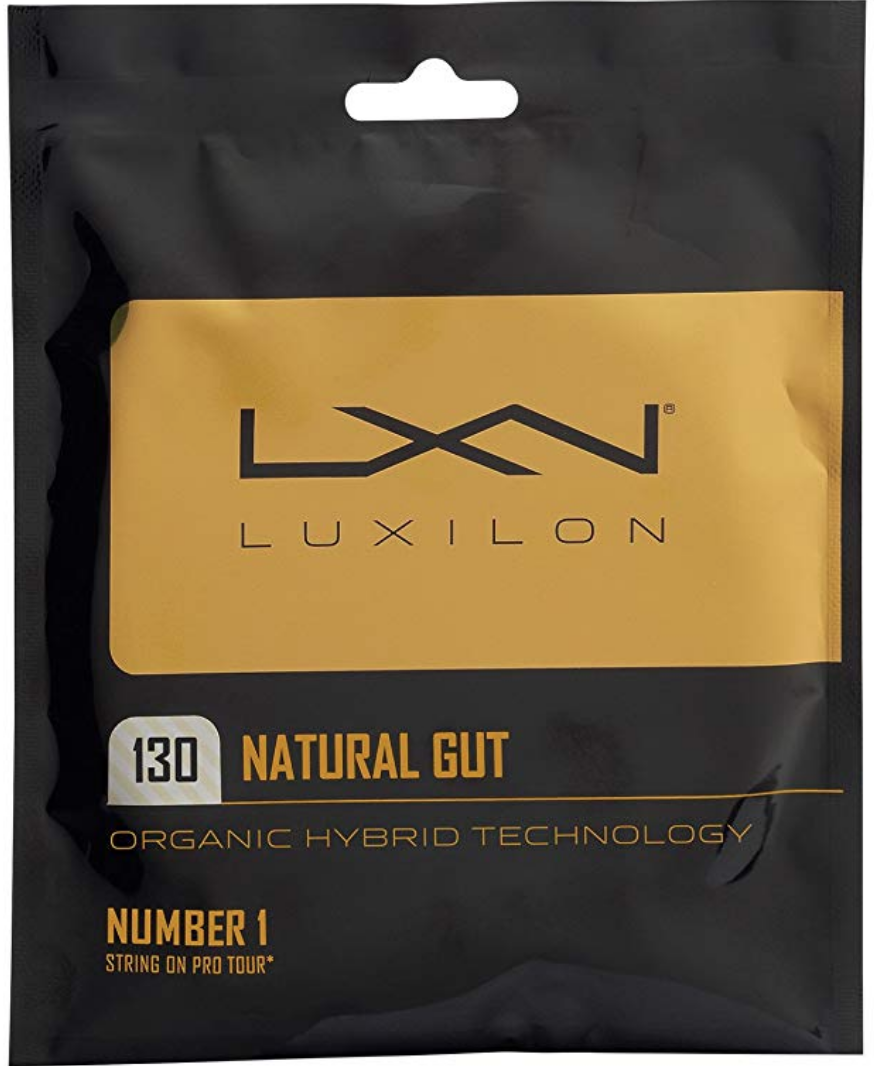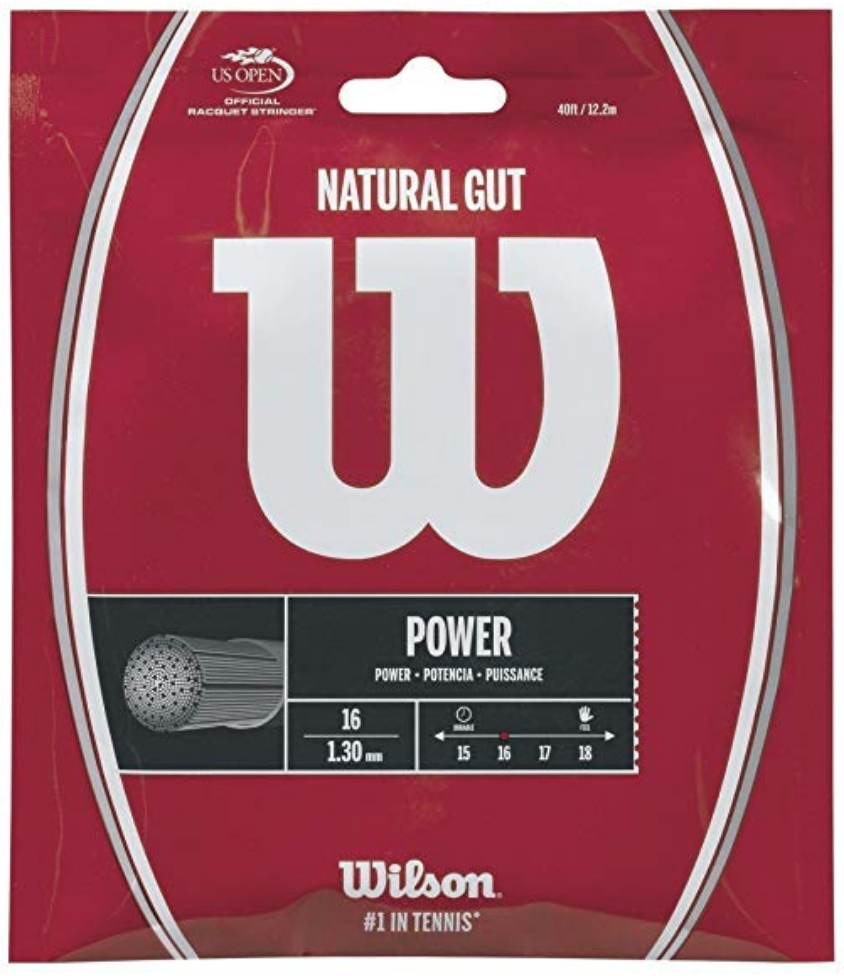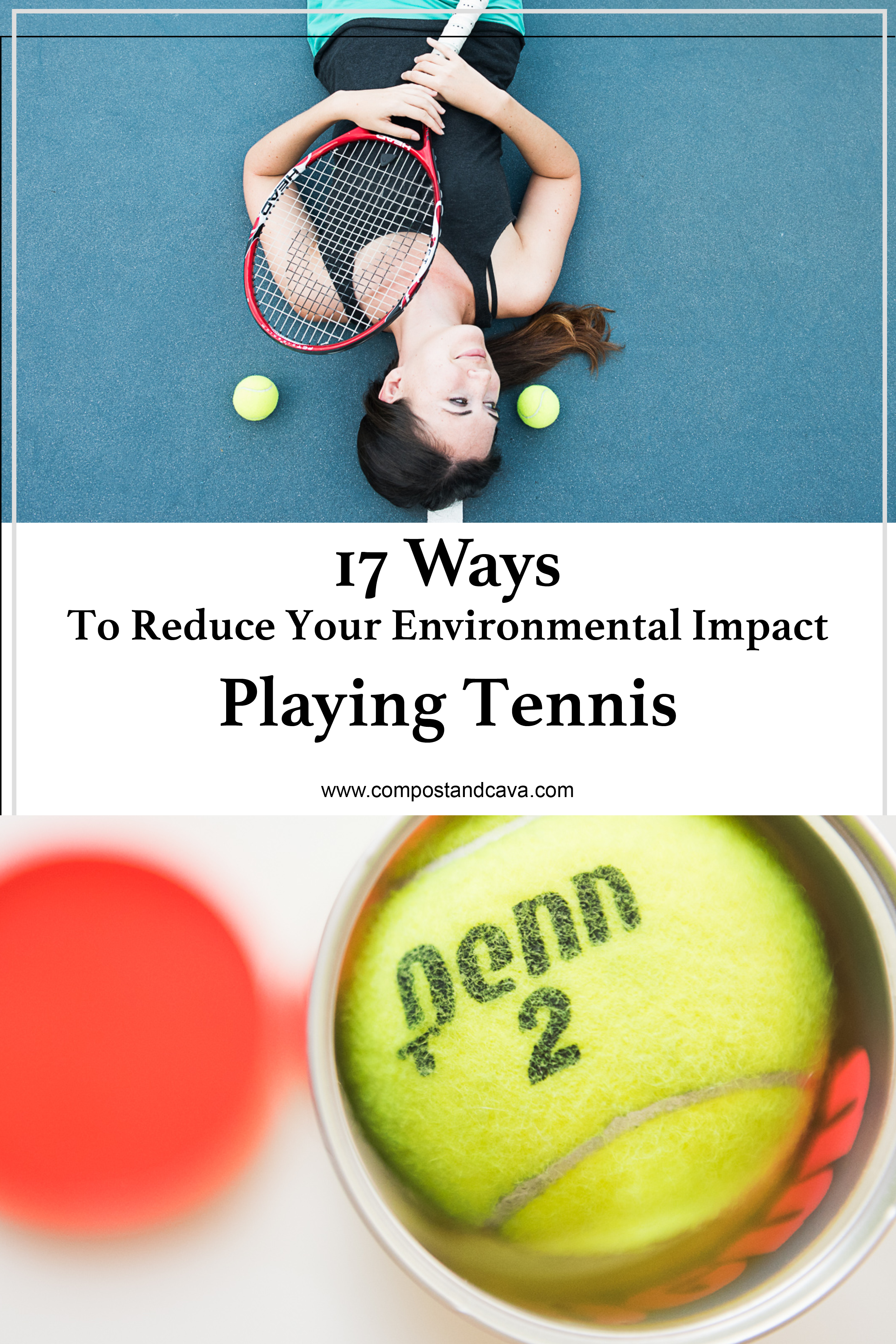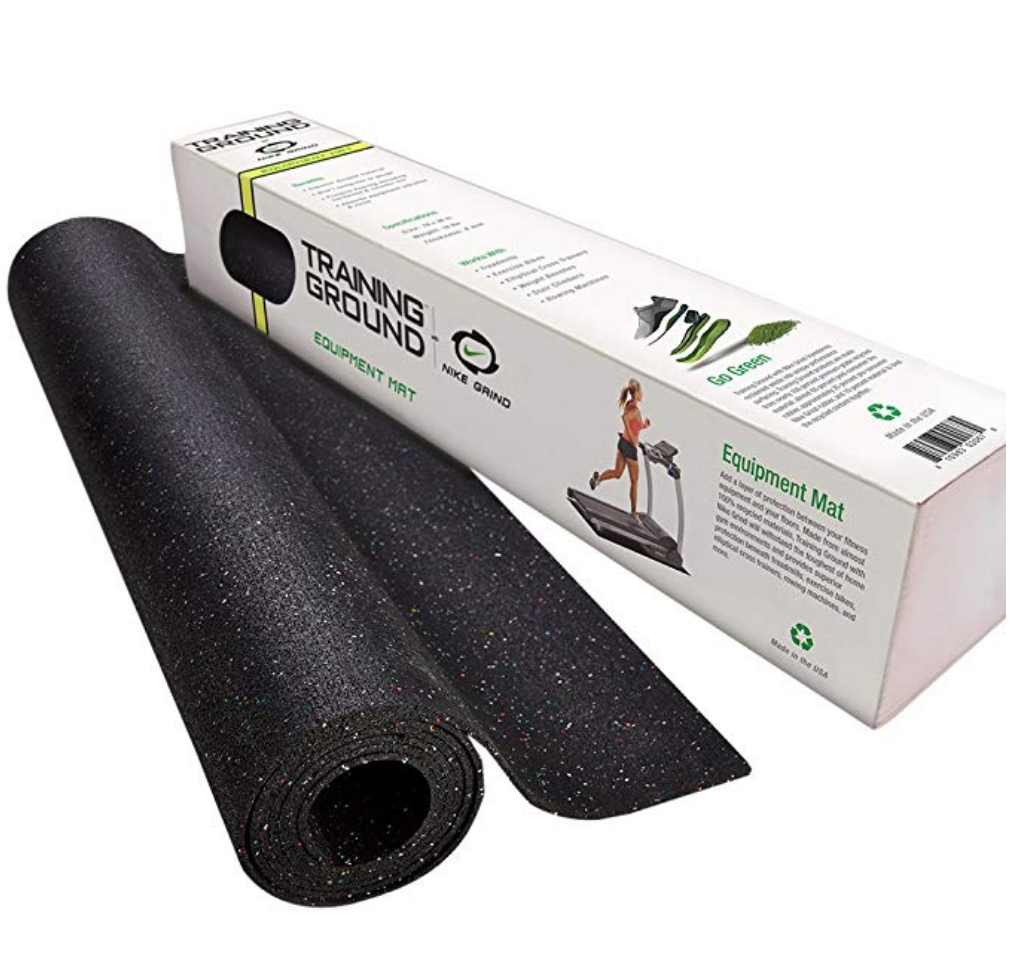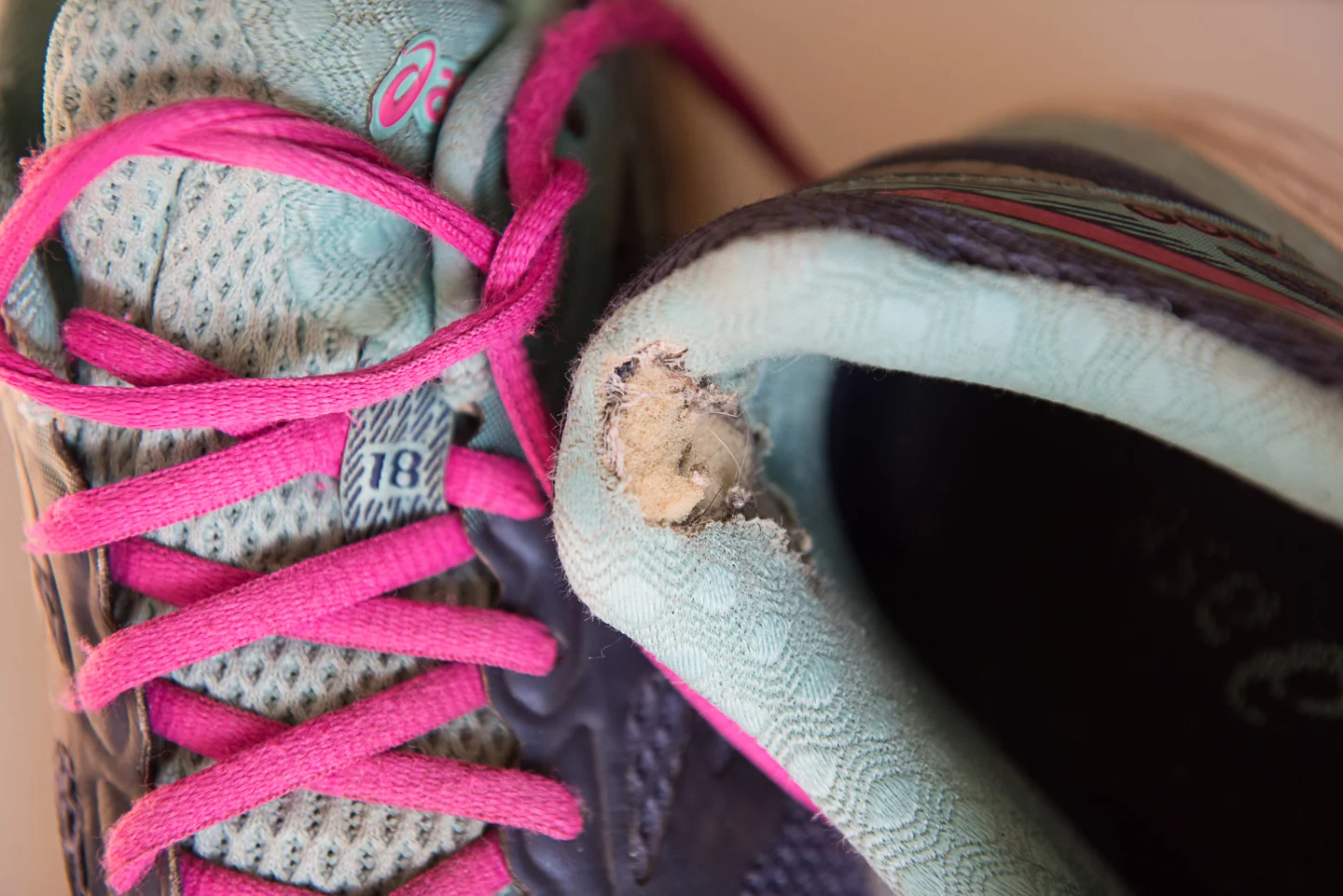Can Tennis Be Eco-friendly? 17 Ways to Reduce Your Impact Environmentally
/I’m keeping the intro short today because this was a doozy of an article to research and write!
I’ve recently reconnected with my beloved childhood sport, tennis, but as someone working hard toward a zero waste lifestyle, I couldn’t help but feel guilty. The tennis industry is awash in trash, single use products, and microfibers. After digging, researching, and wracking my brain, here are 17 reduced-waste and reduced-guilt ways to play tennis and help take the sport in an eco-friendly direction.
TENNIS RACQUETS
1. Rent, don’t buy.
Many clubs have rent-a-racquets, which are perfect if you’re only playing a couple times a year. Take a minimalist approach and don’t contribute to the supply and demand cycle. If you do choose to own your own racquet (no judgment, I certainly do) remember you may not need to purchase a backup racquet if your courts have a rental program.
2. Buy Used Racquets.
Most of us are casual players and not about to pull a Federer anytime soon. The composite of materials in modern tennis racquets make them very challenging to recycle. Buying a used racquet will not only save you some cash, it will help give a tried-and-true racquet a new life despite minor scratches. While Play It Again Sports may have a location near you, don’t shy away from eBay, either, especially if you already know what you’re looking for.
3. Recycle Your Broken Racquets (and Sporting Equipment).
If you're an avid tennis player and environmentalist, you may want to look into a TerraCycle zero waste athletic box. This program, though pricey, allows users to purchase zero waste boxes for broken sporting equipment, including tennis racquets, grips, and strings.
STRINGS
4. Trust Your Gut.
Ok, don’t freak out on me here… but I personally vote in favor of natural gut tennis strings as a more eco-friendly option, though significantly more pricey and certainly not vegan. Hear me out on this one. I dug long and hard into the Internet hoping to find a company that proudly declared its tennis strings were made from recycled synthetics or alternative materials, and I apologize in advance if I missed something. Natural gut strings are some of the oldest and most well respected (as high-performing) tennis strings available, and while they may be coated in a synthetic polymer, they are primarily organic material. Yes, dear reader, they are cow guts: serosa, to be exact.
Why is this my pick, other than that they’re made in most part of an organic material? Because as stated on the PETA website, "The raw material used in natural gut strings is a byproduct of the meat industry." (Yes, it says it right here under Strings (Natural Gut)) Until or unless the beef industry becomes obsolete, we may as well use the serosa to create a more eco-friendly racquet string material instead of new petroleum based plastics, which may take thousands of years to biodegrade.
IF YOU ARE VEGAN: Please see #3 regarding recycling of synthetic tennis strings via TerraCycle.
*This post contains affiliate links. This means that if you click through and give the product a whirl, I get a tiny fee for spreading the news at no extra cost to you.
GRIPS
5. Look (deeply) into your tennis grip.
Commonly used synthetic grips are petroleum-based and not eco-friendly or biodegradable, but they ARE accepted into the TerraCycle program described in #3 above as well as the Garage Box. Most currently end up in the landfill.
Leather grips are an expensive and classic option, but leather comes at its own cost to the environment due to the impact of cattle rearing and the toxic chemicals used in the tanning process. Again, most leather grips currently end up in the landfill but are accepted in the TerraCycle zero waste sports product program and garage organization box program.
As more products come on the market, remember that the world of biodegradable plastics can be incredibly complicated. Bioplastics are ones made from renewable resources (think corn, etc) instead of fossil fuels, but they don't necessarily biodegrade or compost. (Biodegrading and composting are two separate things, by the way.) Biodegradable plastics are plastics (not necessarily made from biomaterials and possibly from petroleum products) that degrade under specific conditions: they break apart. That's it. They don't have to turn into water and air and biomass, they just have to break into smaller pieces of plastic and sometimes toxic chemicals. This is separate from compostable plastics, which must be biodegradable in a composting environment yielding water, carbon dioxide, and biomass.
TENNIS BALLS
The jury is still out on whether pressurized or non-pressurized tennis balls last longer or play better, but I’m suspicious about the environmental impact of producing a ball with exponentially more non-biodegradable rubber composite product with felt that (anecdotally) wears at the same rate as other balls. I covered tennis ball recycling pretty heavily in this post, but let’s go ahead and recap here as well.
360,000,000 tennis balls are produced each year
22 million are recycled
Most balls are only used a handful of times before being discarded
6. Breathe new life into tired tennis balls.
ReBounces has created pressurizing machines to help you get the most out of your tennis balls - up to four times more usage! Their machines are available for individuals and facilities, and will save active players money in the long run.
7. Recycle your tennis balls.
Broken, busted, or filthy balls can be recycled into rubber composite products like tennis court mats, stucco-like product, and playgrounds. Get your country club or facility on board with a recycling program such as Tennis Ball Recycling, Project Green Ball, or Recycle Balls. Many of these programs offer tax-deductible options.
Live in a household playing multiple sports? TerraCycle has a zero waste box for any type of athletic balls, though they're a bit on the pricey side. Simply sign up, choose your box, collect your trash, and ship it off for recycling. Small box is priced at $85.
8. Donate or upcycle your flat tennis balls.
Don’t have the patience to store tennis balls until they’re worth sending? Consider upcycling them into dog toys or simply drop them at your local animal shelter on your way home - but encourage the shelter to join a recycling program as well.
Exciting news: Old tennis balls are now providing new habitat for the endangered European harvest mouse. Read about it here.
9. Eye on the Ball.
DO NOT hit your flat or fraying balls over the fence. That's litter, friends.
Note(s): At this point I've contacted multiple major name tennis ball producers, and none I've spoken with are currently producing a tennis ball with all natural wool felt and instead use a mix of wool and synthetic or all synthetic fibers, which are inevitably shedding plastic microfibers as you play. Bummer, right?
Additionally, Penn has a "Green Initiatives" section on their website. Maybe you'll be more impressed with their efforts than I am, (at the time of this article, their efforts primarily consist of not dumping oil into the environment, using some recycled cardboard, and reusing the scrap rubber they create) though at least someone in the tennis industry has realized the importance of sustainability. They state, "Did you know that most city recycling programs throughout the US will accept plastic PET tennis ball cans in their curbside container pick-up, along with your plastic soda and water bottles?"
I bet you didn't know that, right? Probably because tennis ball cans are actually infamously hard to recycle. The cans are made of multiple types of plastic, have a wrapper, a metal rim and in this NRDC.org article lauding the green efforts of the US Open in 2009 states, "...they had NRDC find a recycling company that could figure out how to recycle the cans that contain two different kinds of plastic (in the can body and lid) and a metal ring that has to be removed." EcoCycle also claims they are not recyclable because of the metal rim, and this New York Times article from 2011 quotes Wilson global business director Jason Collins, "But the cans are one of the most difficult products to make and recycle. The components can be recycled, but together, it’s difficult.” If the US Open had that hard of a time coming up with a strategy for recycling tennis ball cans, you need to check with your local facility before tossing cans in the recycling bin, no matter what plastic number they've been assigned.
According to the representative I spoke with on the phone, they will NOT recycle them in Charleston County.
COURTS
10. Go low maintenance.
I grew up playing on clay courts. I still to this day have a nostalgic love of tracking green granules into my car. When it comes to your tennis courts, you’re most likely to encounter three types: hard courts, clay courts, and grass courts. Hard courts require painting and the filling of cracks in the concrete.
Clay courts are made of a composite of crushed brick, shale or brick, and require surfacing maintenance and damn near constant watering in the summer to keep them from becoming a jolly green dust bowl. According to Har-Tru, recommended watering is twice a day: overnight and once at mid-day. That is a lot of water, especially if you live in areas affected by drought.
Grass courts require fertilizer, which can lead to run-off and also require constant watering. If there are hard courts in your area, support that facility!
TENNIS CLOTHES
11. Buy pre-owned tennis clothes.
The EPA estimates that 10,530 tons of textiles were landfilled in the US in 2015.
Tennis outfits can be downright adorable, playful, or even sexy, and buying quality pre-owned clothing is icing on the cake. Keep cute clothes out of the landfill and check out ThredUp, a beloved online thrift store, or Tradesy, which you've heard me talk about before, and don't dismiss eBay either. This is another area where going green can save you green!
12. Buy athletic clothing made from recycled or sustainable materials.
This is where I have to stop to say I'm proud of my childhood tennis favorites, Adidas and Nike. Adidas has announced it will use only recycled plastics in its products, warehouses, retail stores, and offices by 2024. Nike Grind is a program that converts recycled materials into new athletic shoes and clothing, and today 71% of Nike products use Nike Grind materials.
Taking it a step further and looking for organic bamboo activewear? Boody is one of many brands to consider. Recycled synthetics? Hemp? Organic cotton? WellMade's got you. As always, Ecocult has a great shopping guide to get you (and frankly me) started on the path to more sustainable fashion.
TENNIS SHOES
15. Buy sustainable.
More and more awesome eco-friendly athletic shoe options are arriving on the market. Reebok unveiled their corn and cotton shoes (not biodegradable, but a compostable shoe is allegedly in the works). Adidas' Parley shoes utilize yarn made from recycled plastic waste removed from beaches and coastal communities and contain a chip you can scan with your phone to follow the story of their shoes from bottle to final product. Finally, Nike Grind uses old shoes to make new ones and their Flyknit technology produces 60% less waste than traditional construction methods, reducing nearly 3.5 million pounds of waste since 2012.
16. Donate.
Give shoes that have lost their bounce a second life by donating to a charity like Soles4Souls, which donates gently worn shoes to impoverished communities to empower entrepreneurs, or Share Your Souls, which donates shoes to those who may never have owned a pair before.
As both organizations are giving to individuals, honor the recipients by only donating quality shoes. Shoes lacking laces, with holes or visible wear like the photo below are best recycled.
17. Recycle.
Once you’ve reduced or reused (my old athletic shoes get worn into the ground as litter pick up shoes), finish your tennis shoes’ lifecycle by recycling them. Nike boasts one of the largest athletic shoe recycling programs, accepting shoes in all conditions from all brands. The shoes broken down, ground up, and used for products ranging from Nike Grind clothing and shoes to athletic courts.



